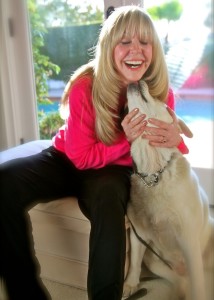 Welcome back friends! As we enter the month of August and begin to say our goodbyes to what I hope for you was a wonderful summer — I want to say a word about our beloved canine companions.
Welcome back friends! As we enter the month of August and begin to say our goodbyes to what I hope for you was a wonderful summer — I want to say a word about our beloved canine companions.
Ours is a friendship that has spanned 20,000 years. Our dogs descend from the great wolves who roamed the earth’s wilderness long before it was settled by humans. Now, as the centuries passed, we humans entered into a partnership with our wolf-dogs, and bread them with great love and care. And today, we and our canine companions share a bond rare in this world.
Indeed, different cultures have credited the dog with great abilities. Some believe the dog taught humans to cultivate crops. Others believe the dog bestowed upon us the gift of fire. Yet others maintain there is a miraculous healing power in the friendly lick of a dog.
And, these are the associations that remain with us today. The mere act of petting a dog fills the atmosphere with tranquility. Dis-harmony and Dis-ease melt away. The dog’s calming effect is utilized by modern science in treating victims of heart attacks, high blood pressure and epilepsy. The dog sees for the blind. It acts for the paralyzed. And, it speaks for the mute.
Dogs can hear and smell things from miles away. In fact, scientists believe that a dog’s ability to smell is thousands of times greater than that of a human. This is because dogs have about twenty-five times more nasal olfactory receptors (the tissues that are responsible for the sense of smell) than humans. Each receptor detects and identifies the minute odor molecules that are constantly dispersed by different objects, animals and people. So while a bare sidewalk to us is just that — to a dog it is a cornucopia of information bearing clues about who recently passed over the sidewalk, what animals have been in the neighborhood and what kind of sandwich the little boy down the street accidentally dropped last week.
Knowing this, of course, it comes as no surprise that dogs have become invaluable assets in our war on cancer. For those of you who have taken The Course, we discuss the role of canine cancer researchers in Volume 2. And making big news now is the fact that science is having great success with dogs that can “sniff out” early stage ovarian cancer! Now, this is extremely important because ovarian cancer is one of our “silent” cancers — meaning that it is often not detected until it is quite advanced and much more difficult to successfully treat.
Here’s how it works! There are compounds in tissue called volatile organic compounds (VOCs) — or odorants. In the early stages of ovarian cancer these odorants are altered. And, it is this differentiated odor in the cancerous tissue that dogs have been trained to identify. This means that more women with ovarian cancer can be diagnosed early — and when diagnosed early, these women have a five year survival rate of greater than ninety percent!
So, congratulations to the Working Dog Center of the University of Pennsylvania School of Veterinary Medicine, Penn’s Gynecologic Oncology division, the astronomy and physics departments of Penn’s School of Arts and Science and the Monell Chemical Senses Center for your outstanding work!
I just LOVE our dogs!
And remember,



Leave a Comment